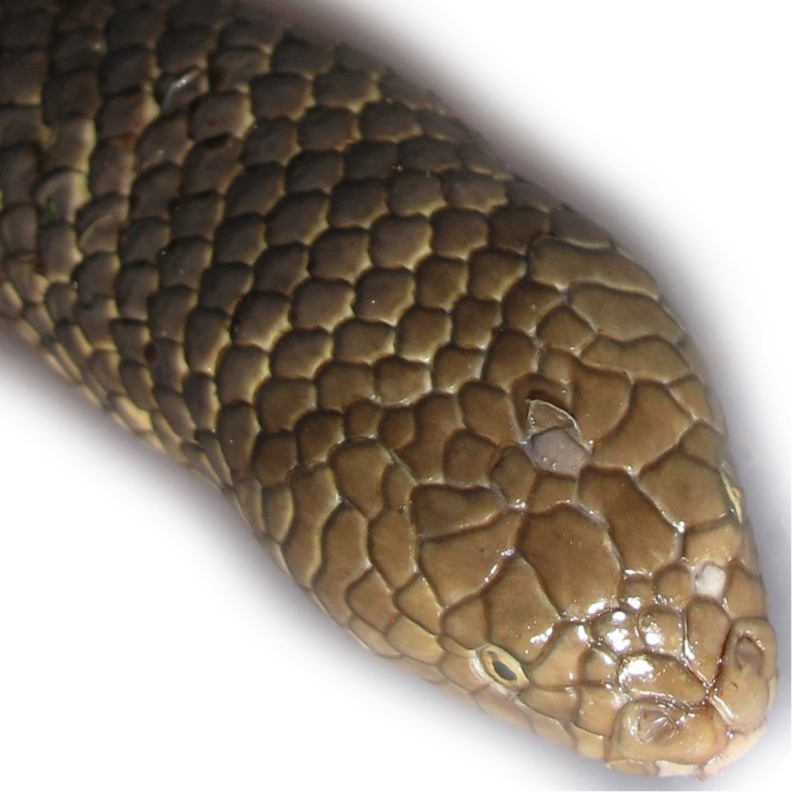2 'Extinct' Sea Snakes Discovered Off Australian Coast

Two species of venomous sea snakes that were thought to be extinct have been discovered slithering off the coast of western Australia.
The brownish-purple leaf-scaled sea snake (Aipysurus foliosquama) and the yellowish-brown short-nosed sea snake (Aipysurus apraefrontalis) once lived among the Ashmore and Hibernia reefs in the Timor Sea, but disappeared between 1998 and 2002, the researchers said.
In fact, intensive reef surveys carried out between 2001 and 2012 failed to find a single A. foliosquama or A. apraefrontalis in those reefs, according to the scientific communication website The Conversation. After that, both species were listed as critically endangered, first by the International Union for Conservation of Nature (IUCN) in 2010, and next by Australia's threatened species legislation in 2011, and many scientists presumed they were extinct. [Image Gallery: Snakes of the World]
However, every once in a while, researchers would hear anecdotal stories about sea snake sightings, though in different places off the western Australia coast.
So, a group of scientists launched an exhaustive search for the two snake species. They spent more than 60 hours scuba diving and snorkeling, and more than 25 hours with a manta tow (dragging a snorkel diver behind a small boat). They also investigated prawn trawler bycatch (trawling boats using nets to catch seafood), and spent 2 hours searching for the snakes during low-tide walks, according to the study.
The search was a success, yielding 16 of the purplish A. foliosquama and seven of the yellowish A. apraefrontalis snakes, the researchers said. Whenever possible, the researchers took small tissue samples from the snakes before setting them free, and then returned to the lab to verify the species with genetic analyses, according to the study.
"This discovery is really exciting — we get another chance to protect these two endemic western Australian sea snake species," study lead author Blanche D'Anastasi, a doctoral candidate at the Australian Research Council (ARC) Centre of Excellence for Coral Reef Studies at James Cook University, said in a statement.
Get the world’s most fascinating discoveries delivered straight to your inbox.
"But in order to succeed in protecting them, we will need to monitor populations as well as undertake research into understanding their biology and the threats they face," she added.
Surprisingly, the researchers found the snakes in previously unreported habitats. They discovered A. foliosquama in the lush sea-grass beds of subtropical Shark Bay, located 1,056 miles (1,700 kilometers) south of Ashmore Reef — about the distance between New York City and Jackson, Mississippi.
"We had thought that this species of sea snake was only found on tropical coral reefs," D'Anastasi said. "Finding them in sea-grass beds at Shark Bay was a real surprise."
Grant Griffin, a wildlife officer with Western Australia Parks and Wildlife, also snapped a photo of two courting A. apraefrontalis snakes in Ningaloo Reef in April 2013.
"We were blown away; these potentially extinct snakes were there in plain sight, living on one of Australia's natural icons, Ningaloo Reef," D'Anastasi said.
Disappearing snakes
It's still a mystery why these two species, as well as three other sea snake species, disappeared from Ashmore Reef, D'Anastasi said.
Australia is a hotspot of biodiversity for sea snakes, hosting about 35 of the roughly 70 known sea snake species in the world. Sea snakes typically live in shallow water, give birth to live young and are important predators that help maintain coral reef ecosystems, the researchers said. [Colorful Creations: See Photos of Incredible Coral]
"What is of extreme concern, however, is that it has not yet been possible to identify the processes that caused the extirpations [local extinctions] of these and other Aipysurus species on Timor Sea reefs," the researchers wrote in the study.
Though many of the sea snakes were collected as trawler bycatches, the researchers weren't able to link their disappearance to such trawling.
Perhaps other conditions, such as loss of habitat or prey; disease; climate change; or the effects of mining exploration and extraction harmed these local populations, the researchers said.
The study was published in the February 2016 issue of the journal Biological Conservation.
Follow Laura Geggel on Twitter @LauraGeggel. Follow Live Science @livescience, Facebook & Google+. Original article on Live Science.

Laura is the managing editor at Live Science. She also runs the archaeology section and the Life's Little Mysteries series. Her work has appeared in The New York Times, Scholastic, Popular Science and Spectrum, a site on autism research. She has won multiple awards from the Society of Professional Journalists and the Washington Newspaper Publishers Association for her reporting at a weekly newspaper near Seattle. Laura holds a bachelor's degree in English literature and psychology from Washington University in St. Louis and a master's degree in science writing from NYU.



